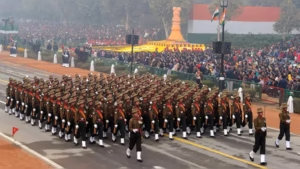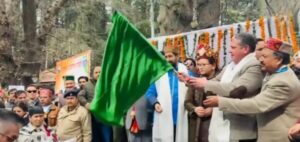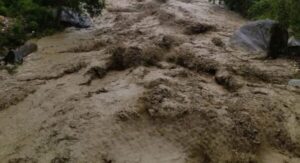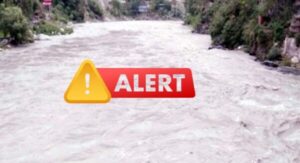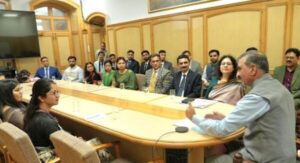All About Kashmir, jammu and Kashmir in 2023 ?
- KASHMIR
- HISTORY
- PRESENT SITUATION
- GEOGRAPHY
- CLIMATE
- BIODIVERSITY
HISTORY
The Princely state of Kashmir has a long history. 7th to 14th century Kashmir was ruled by Hindu dynasties. In 1339, Shah Mir became the 1st Muslim ruler to occupy Kashmir. Kashmir was part of the Mughal Empire from 1586 to 1751. In 1820, Afghan rulers took over it. In the year 1819, the Sikh army took over Kashmir under the leadership of Ranjit Singh. Thus, Kashmir became part of the Sikh kingdom.
The beauty of Kashmir attracted many European visitors. Several poetries are written on the magnificent beauty of Kashmir. Jammu & Kashmir got combined under the treaty and a bill of sale from 1820 to 1858.
Kashmir came under the direct rule of the British Empire in 1857 after the Indian Rebellion. As British Rule ended on 14 & 15th August, Pakistan launched a Guerrilla onslaught to threaten its ruler to surrender. Instead, Maharaja asked Mountbatten for assistance, governor-general, agreed on a condition, that the ruler will accede to India.
Later UN was invited to settle the dispute. UN suggested the opinion of Kashmir would be uncertain. This uncertainty led to two wars over Kashmir, between India and Pakistan in 1965 and 1999, and the dispute is unsettled today.
PRESENT SITUATION
Kashmir is divided among 3 countries over a territorial dispute. India administers Central and South Kashmir and Ladakh. Pakistan administers the Northwest part of Kashmir. China administers the North-Eastern part of Kashmir
GEOGRAPHY
- Latitude – 32° & 36° N.
- Longitude – 74° & 80° E
- Area – 68000 sq. mil (180000 km2)
Kashmir share borders with the following. In the North and East with China, in the Northwest with Afghanistan, in the West with Pakistan, and in the South with Himachal Pradesh, India. Kashmir is traversed by 3 rivers, Indus, Jhelum, and Chenab. These 3 rivers divide the Kashmir region into 3 valleys.
- Indus valley forms the North and North-Eastern portion.
- The upper region of Jhelum valley forms the proper Vale of Kashmir, surrounded by mountains.
- Chenab valley forms the southern portion of the Kashmir region with hills towards the south.
Lower down the Vale of Kashmir there are many freshwater lakes, Wullar Lake, Dal Lake, and Harkaras Lake.
CLIMATE
Kashmir has a great variation in climate due to differences in the altitudes. Temperature ranges from,
- The tropical heat of Punjab summers
- The intensity of cold due to mountains
- Jammu diversion, excluding Chenab valley, exhibits a humid subtropical climate
- The Vale of Kashmir has a moderate climate.
- Ladakh is considered to have an almost rainless climate.
BIODIVERSITY
Kashmir has a recorded forest area of about 20,230 km2. It has some National Parks and Sanctuaries. Forest varies according to climatic conditions. The forest ranges from
- The tropical forest is found at the foothill of Jammu and Muzaffarnagar.
- A temperate forest is present in the Vale of Kashmir.
- Alpine grassland is at the high altitudes meadows of Ladakh.
These forests consist of a large variety of deciduous tree species namely, Catechu, Sisham, Pines, and many more. Kashmir is referred to as the beautiful spot of medicinal and herbaceous flora of the Himalayan region. There are 100 wildflower species in Kashmir.
Kashmir is also home to rare species of animals, some of which are protected by sanctuaries and national parks.
- The Dachingam National Park is famous for the Kashmir stag, the black bear of Asia.
- The Deosai National Park is famous for the brown bear of the Himalayas.
- The Hemi National Park is famous for Snow leopards.
There is also a large variety of musk deer, leopard cats, red foxes, and many more. Kashmir valley is home to at least 711 bird species, out of which 31 are classified to be globally threatened.
Kashmir is considered Heaven on Earth.

Continuing the achievement of the journey of effectiveness and credibility of more than 10 years in the career of journalism, as a woman journalist, I am Serving as the founder, promoter and editor of DiaryTimes with the trust and support of all. My credible coverage may not have given a big shape to the numbers, but my journey presents articles that make you aware of the exact and meaningful situations of Himachal’s politics, ground issues related to the public, business, tourism and the difficult geographical conditions of the state and financial awareness. DiaryTimes, full of the experience of my precise editorial expertise, is awakening the flame of credible journalism among all of you, so that the eternal flame of meaningful change can be lit in the life of the people of the state and the atrocities being committed against the people can be brought to the fore, I am motivated for that. If even a small change comes with the power of my journalism and the whole world becomes a witness to that issues, then I will consider myself fortunate.

